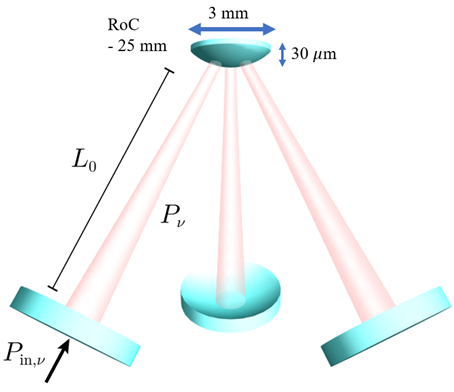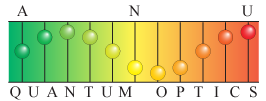Light carries momentum. When light is reflected or absorbed, the change in momentum results into the exertion of a pressure on the incident surface, known as radiation pressure. An optical cavity can couple to a mechanical oscillator via radiation pressure force. In recent years, such an optomechanical systems have found many interesting applications, such as quantum information processing, laser cooling and precision measurements. The performance of the current experimental setups is limited by the measurement of the displacement of the mechanical oscillator since the thermal noise in the environment is transferred to the oscillator through its directly contacted material.
Optical levitation is an effective way to isolate the mechanical resonator from a noisy environment. An object can be optically levitated when its weight is balanced by the radiation pressure force of the incident light. A good example is optical tweezers where micron-sized dielectric particles can be trapped by radiation pressure force alone. They are, however, subject to scattering losses.
To completely eradicate environmental and scattering losses, we are building a novel scattering-free levitation system in which a small macroscopic mirror is trapped by the radiation pressure forces exerted by the intracavity fields of three optical cavities. The three cavities form a tripod to allow stabilisation of the levitating mirror. The readouts of all cavities provide a complete picture of the state of the mirror, making the system suitable for state-of-the-art applications.
You can read our original proposal in Phys. Rev. Lett. 111, 183001 (2013) and a more general article in The Conversation: "Levitation is just part of the power of pushy light".

